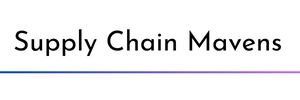Photo: Unsplash
Have you ever had a great idea and just kept it to yourself? Of course not. You wanted to share it with others, right? So, you discuss it with a colleague or two. At some point people may add to your idea and soon it is even better. That is collaboration. When you take that idea and implement it, you may tweak it further to make it better still. When people comment on what a great idea it is, you can now say that it was a team effort. That is the epitome of collaboration.
Collaboration is the act or process of people working together or cooperating to perform complex tasks. People can collaborate on just about anything, whether they are ideas, products, or projects. Collaboration is common within all successful organizations, and the most successful ones are found to have the highest rates of collaboration, especially in the post-pandemic VUCA world where change is constant, and outcomes are unpredictable. VUCA stands for Volatile, Uncertain, Complex, and Ambiguous and was developed by the US Army War College in 1987.
How does an organization become collaborative? First, its leaders must believe in the collaborative process. It must be part of the organization’s culture. Leaders must understand that the best ideas come through collaborating. Collaboration instills teamwork and teamwork instills collaboration. It is a mindset like the Three Musketeers, “All for one, and one for all.” Collaboration works best in a culture of trust and where individual egos are held in check. It requires adjustment and compromise of one’s actions to other’s needs to be successful. People who feel a need to take credit for things have a hard time in a collaborative working environment. As the old saying goes, “There is no “I” in team.”
Collaboration works naturally in team settings when a group of people come together for the purpose of solving a problem. Team members must be secure in their roles and support one another. To function as a cohesive group, their individual goals must be aligned with the group’s primary goal as well. The focus should be on continuous improvement of the organization to the extent that the organization’s goals are of higher importance than those of the individual.
The length of time a team is together can be short or long. Departments within organizations could be considered permanent teams and the best departments feel that way. As team members will come and go, collaborative teams will generally follow the five stages of a team, forming, storming, norming, performing and adjourning. Let’s examine each stage a little closer.
During the Forming Stage team members are introduced to each other and given details of the project or problem to solve. At this stage team members are trying to see how they will fit in and what roles they will eventually play. Team leaders may be assigned in advance, or they may be developed organically and while the team’s purpose or goal may be developed in advance, the actual problem development statement and rules of engagement will be developed by the team members themselves.
The Storming Stage is where the team works out the kinks in its operating rules. This is where most conflicts occur as team members feel out their roles and determine their goals. Productivity may seem slow or almost nonexistent especially if the wrong people are placed in leadership roles, as subgroups or cliques may form that can undermine the success of the group and may even cause the group to fail.
As the leaders emerge, conflicts are resolved, goals are agreed upon, and the team enters the Norming Stage. Progress is made and the group’s productivity increases dramatically. The team comes together in a cohesive way as members truly collaborate to solve the problems that they were originally formed to solve. teams may form bonds of trust and true lifelong friendships can and are developed at this stage.
Teams really hit their productivity stride during the Performing Stage. By this time collaboration and its first cousin, consensus can become highly developed, giving the team the commitment to complete its mission and reach (and hopefully exceed) its goals.
Once the team has completed its mission and solved the problem at hand, it begins to wind down during the Adjournment Stage. Final reports are written, and team members may begin to be reassigned to other duties or projects. It is important to celebrate the team’s success at this point and thank members for their contributions, so be sure to have some sort of celebration ceremony to memorialize your accomplishments.
In Part 2 we will discuss the skills needed to make a team successful.
Gary welcomes your comments and feedback. You can email him at garys@supplychainmavens.net.

